Painting Help When It’s Hot
Here in southern California, we experience harsh weather. Although its easy to simply think our climate is “hot and dry”, it’s more complex than that. We can have extremely hot weather in our valleys and cold weather in our local mountains. In fact, here in Orange County, the temperatures from flatland areas to those in valleys can vary significantly. Let’s not forget about our rain – we can have a lot or very little. Orange county averages 278 sunny days and 14 inches of rain per year. With hotter summer months, it’s easy to see why people need painting help when it’s hot.
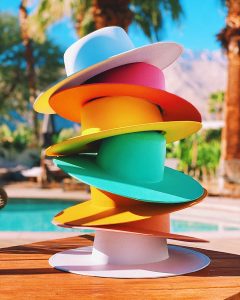
Before we talk about painting help when it’s hot, let’s first consider what paint is for. The primary purpose of paint is to protect. Color is secondary. To protect, paint must bond securely to the surface – becoming one with that surface. It needs to move with the surface to prevent cracks, flakes, and peeling. Properly prepared surfaces using an ultra-supreme paint applied under the correct weather conditions will ensure outstanding results.
Three things really matter when painting
When it comes to a high-quality painting job that will protect your home and last, three things matter:
- Weather
- Preparation
- Paint
Of these, the most important is weather. Do not ignore the weather! Perfect preparations and the best paint will mean nothing if you paint during poor weather conditions. Here in Orange County we can see temperatures in the 80’s to the 100’s from May through November. In similar fashion, it can rain from October through June.
1) Weather and Painting
- Temperature – Two things happen as it heats up. First, wood, stucco, drywall, cement, etc. surfaces expand (stretches and gets bigger). Second, the paint expands. Neither the surface nor the paint expands uniformly. This creates a discrepancy in movement between the two. As the two cool, they contract (get smaller) at different rates of movement. When the two are out of balance (or equilibrium), speckling, blister, and surface cracking generally occurs.
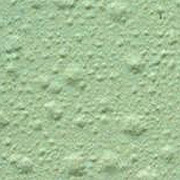 | 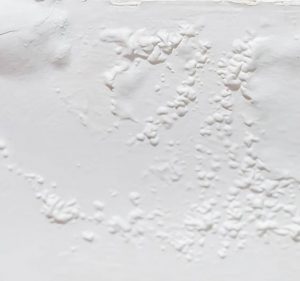 | 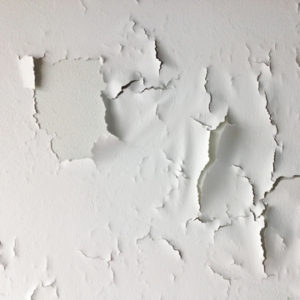 | 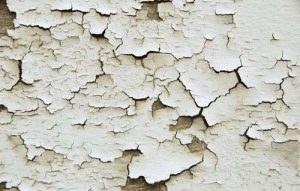 |
| Drywall Blistering | Eve Blistering | Drywall Cracking | Eve Cracking |
These conditions can be caused by painting over surfaces that are too hot, wet, or both | |||
- When is it too hot to paint – Indoors and outdoors? There are two thoughts on this. Most major paint manufactures say somewhere in the neighborhood of 85ºF – 95ºF (29ºC – 35ºC). However, here is what I have learned in my more than 44 years of hands-on experience. It is not just the outside temperature but the temperature of the surface itself. For example, although it may only be 90ºF outside, the inside drywall ceiling can be 20º to 30º+ hotter from the heat in the above attic space. The same is also true for an inside wall receiving direct sunlight on the opposite outside wall!
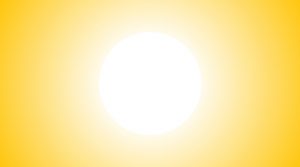 Another example are the eves outside. With an outside temperature of 90ºF, the surface of the roof can be up to 190ºF. The shady underside of the eve can easily equal that 190ºF temperature (140ºF is considered too hot to touch).
Another example are the eves outside. With an outside temperature of 90ºF, the surface of the roof can be up to 190ºF. The shady underside of the eve can easily equal that 190ºF temperature (140ºF is considered too hot to touch).
Paint will not properly adhere (or bond) under these conditions. You are wasting your time and money applying paint in these situations.
All paint problems are the result of bonding. If paint cannot properly bond, durability and performance is reduced. How much? Anywhere from 100% to the unknown. It all depends on how much the bonding time is reduced and the area being painted. For example, in a bathroom where there is moisture, aerosols, and other airborne impurities, bonding is critical for moisture, mold, and fungus control. If the paint does not bond properly in a bathroom, it will deteriorate quickly because of the environment. Proper paint bonding is affected by:
- Temperature
- Humidity
- Wind
- Surface preparation
- Primer
- Paint
 Humidity – Inside and outside! When the humidity is too high or low, pause. High humidity will cause paint to dry very slowly while low humidity will cause paint to dry to fast. It’s much easier to resolve low humidity painting issues than high humidity. In high humidity indoor and outdoor environments, blistering, cracking, and mold behind the paint is common. Painting in these conditions can also cause the paint to sag – giving it a droopy look. High humidity can also cause the same problems as illustrated above under temperature. Bottom line – Painting in high humid conditions accelerates paint deterioration.
Humidity – Inside and outside! When the humidity is too high or low, pause. High humidity will cause paint to dry very slowly while low humidity will cause paint to dry to fast. It’s much easier to resolve low humidity painting issues than high humidity. In high humidity indoor and outdoor environments, blistering, cracking, and mold behind the paint is common. Painting in these conditions can also cause the paint to sag – giving it a droopy look. High humidity can also cause the same problems as illustrated above under temperature. Bottom line – Painting in high humid conditions accelerates paint deterioration.
Painting Tips
 Tip: After painting a bathroom, wait 48 hours before taking a shower or bath. Why? Steam and water splash will damage the paint and cause it to deteriorate quickly.
Tip: After painting a bathroom, wait 48 hours before taking a shower or bath. Why? Steam and water splash will damage the paint and cause it to deteriorate quickly.
If you use steamy water in a sink to shave or wash, refrain from this for 48 hours. Same reason as above. That steam will collect on ceiling and wall surfaces and damage the new paint.
Do not use aerosols or hand-held pump dispensers (hairspray, deodorant, perfumes, feminine products, deodorizers, etc.) for the same 48-hour duration after painting. Here too, the chemicals will damage and shorten the life and performance of the paint.
Inside the house, thoroughly vacuum and dust the entire area before painting. After painting, do not perform any house cleaning or use the vacuum for 48 hours. Using a vacuum anywhere near the area will blow dust, hair, and debris all over your new paint. Outside the house, make sure you don’t perform any gardening for 48 hours. Mowing, edging, and blowers can easily damage your new paint (these all have high wind and throwing forces). Make sure you water the yards and planter beds before painting. Leave the water off for 48 hours after painting. In all cases, keep pets away from painted areas for 48 hours.
For exterior projects, do not paint:
- In the rain.
- Forecasted to rain within 4 hours of painting.
- There is heavy fog.
- Active morning drizzles.
- A light morning mist unless the area being painted is covered.
- Wind – A light breeze can be fine as this helps drying time. However, windy conditions will cause the paint to dry quickly and get full of dirt and debris. Remember, paint must bond tightly to its surface. This is only possible if there is sufficient drying time. Too little and paint will not bond properly.
- Inside wind . . . yes, inside wind. Do not paint with ceiling fans or floor fans on. Air conditioning and heating is generally fine (but not always) provided you are not using a sprayer. Always paint with plenty of ventilation. However, if the wind picks up, make sure to close the windows about halfway. When the wind stops, reopen the windows. Windows should have good screens on them so insects cannot fly into your freshly painted surfaces.
2) Preparation when Painting
 Check the Forecast – A good place to start is your cell phone. Open your favorite weather app and look at the high/low for the day, temperatures by hour, chance of rain, humidity, and wind. Also pay attention to the cloud cover. Read and follow the instructions on your paint can.
Check the Forecast – A good place to start is your cell phone. Open your favorite weather app and look at the high/low for the day, temperatures by hour, chance of rain, humidity, and wind. Also pay attention to the cloud cover. Read and follow the instructions on your paint can.- Never paint from the can. From the moment you open the can, the liquids in the paint begin to evaporate. Pour into a bucket no more than 1/3 of the can. Anymore and you will be applying “dried-out” paint. Always secure the lid back on the can after pouring the paint. Secure by pushing down on the lid with the palms of your hands. Do not use a hammer.
- Never pour used paint back into the can as this contaminates the paint. Do not store brushes or rollers inside the paint can.
How is paint made?
- Virtually all paint today is water-base. In fact, 40% to over 60% of paint consists of water and additives with the remaining representing pigments and acrylic resins. During the manufacturing process, highly purified water is used. The first time a paint can is opened, bacteria is introduced. Once opened, paint has a limited 12-18-month shelf life. After this, the paint is considered rotten and should never be used for painting anything. To learn about paint disposal, see What To Do With Old Paint.
- Paint starts to evaporate the moment the can is opened and poured into a bucket. When its hot (85ºF+), and you cannot use what was poured in 30 minutes, add some cool water to the paint to keep it pliable. Follow the instructions on the paint can for the proper amount. Do not add extra or any more than the manufacturer recommends. Adding extra will severely degrade the paint and reduce its life significantly.
- There are some who recommend placing ice your paint can when its hot. This is a bad idea. It freezes the paint and damages it. If its so hot you need or want to add ice, you should not be painting. Wait until it cools down to whatever the paint manufacturer recommends.
3) Paint
 Most paint today is either latex, acrylic, or acrylic/latex. Acrylic paint is made of pigment suspended in an acrylic polymer solution and acrylic resin. Latex on the other hand is a more water-based paint. Similar to acrylic paint, it is made from acrylic resin. Both become water-resistant when dry. The main difference between the two paints is that acrylic paint is chemical-based and latex paint is water-based (both clean up with water). Because acrylic is chemical based, the chemicals in acrylic paint make it more elastic than latex paint (acrylic paint will contract and expand better than latex paint). This means acrylic will expand and contract properly as temperatures fluctuate. This reduces the amount of flaking and cracking. Acrylic is much more durable and costs more than latex. Paints that are 100% acrylic are superior to latex and will last significantly longer when properly applied. They also have much better resistance to the sun and retain their film (or gloss) better than latex paints.
Most paint today is either latex, acrylic, or acrylic/latex. Acrylic paint is made of pigment suspended in an acrylic polymer solution and acrylic resin. Latex on the other hand is a more water-based paint. Similar to acrylic paint, it is made from acrylic resin. Both become water-resistant when dry. The main difference between the two paints is that acrylic paint is chemical-based and latex paint is water-based (both clean up with water). Because acrylic is chemical based, the chemicals in acrylic paint make it more elastic than latex paint (acrylic paint will contract and expand better than latex paint). This means acrylic will expand and contract properly as temperatures fluctuate. This reduces the amount of flaking and cracking. Acrylic is much more durable and costs more than latex. Paints that are 100% acrylic are superior to latex and will last significantly longer when properly applied. They also have much better resistance to the sun and retain their film (or gloss) better than latex paints.- Acrylic paints have greater resistance to troublesome paint failures like blistering, flaking, cracking, and peeling. When dry, the surface becomes strong and flexible and bonds incredibly well. They adhere extremely well to a variety of interior and exterior surfaces.
The Paint Brand Matters!
 The brand matters a lot! When considering paint, it is all about performance. Performance is defined by adhesion (bonding), flexibility, color fade, and gloss loss. Inside the house, block, sag resistance, hide, scrub resistance, and washability are super important.
The brand matters a lot! When considering paint, it is all about performance. Performance is defined by adhesion (bonding), flexibility, color fade, and gloss loss. Inside the house, block, sag resistance, hide, scrub resistance, and washability are super important.
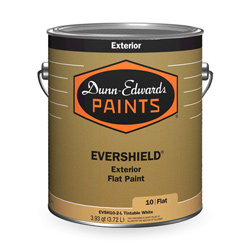 I have been painting for more than 44 years. I have applied thousands of gallons of paint and primer on every surface imaginable under every condition. There is no better paint than Dunn Edwards.
I have been painting for more than 44 years. I have applied thousands of gallons of paint and primer on every surface imaginable under every condition. There is no better paint than Dunn Edwards.
The 100% acrylic and acrylic/latex ultra-premium lines of Dunn Edwards paints are formulated using ultra-premium resins and pigments. These provide exceptional performance and feature extraordinary sheen uniformity, hide, superior stain resistance, washability, and adhesion. These paints have virtually no odor during or after application and are perfect for painting occupied spaces. They have great flow and leveling for an even, uniform finish. When it comes to paint and painting itself, you definitely get what you pay for. For more on paint, see What Is The Best Paint and How Do I Choose The Right Painter?
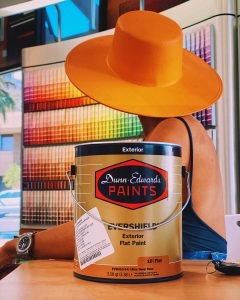
What about Paint Color?
- My advice when it comes to color: (a) pay attention to resale value and (b) whatever makes you happy. It seems like these two options contradict each other. Well, they do! Look, if you are planning on selling your home in the near future, then absolutely pay attention to what are the best colors for selling your home. However, if you are planning on staying in your home for at least 10 years, use whatever color makes you happy! It is your house. Forget what everyone else says, you and your family live there, not the guy down the street – he has his own house. Color is a very personal thing. One set of eyes might love a baby blue in the bedroom while another goes crazy over a soft blue gray! It is your house – paint it the color that says to you – love, warmth, and family. For more on paint colors, please see Best Interior Paint Colors.
- Where to start? If you are painting outside, paint in the shade and chase the sun. In other words, you may need to paint different sides of the house during the day depending on where the sun is located. Always start early when it is hot. You should be on the ladder when the sun is on the horizon – just breaking day. If inside, follow the sun. Remember, an inside wall receiving direct sunlight on the outside might be too hot to paint.
Brushes and rollers
 Do not let your brushes or rollers sit in the can. Never let either load up with dry paint. When it is
Do not let your brushes or rollers sit in the can. Never let either load up with dry paint. When it is  hot, always stop and rinse brushes and rollers when you notice paint drying behind the wet edge on the brush and on the sides of a roller. When you stop for lunch, always thoroughly clean all brushes, rollers, screens, and paint buckets. After lunch, start with clean tools.
hot, always stop and rinse brushes and rollers when you notice paint drying behind the wet edge on the brush and on the sides of a roller. When you stop for lunch, always thoroughly clean all brushes, rollers, screens, and paint buckets. After lunch, start with clean tools.
How Should I Paint?
- Never allow anyone to spray paint the outside of your house. Virtually all Painters today spray the outside of houses. Why? It is cheap – both ways. Painters can get the house painted quickly using inferior, watered down paint. Spraying also gets over spray on everything (windows, screens, roof, lights, fencing, the neighbor’s house, cars, etc.). Correct bonding is virtually impossible when spraying the outside under almost every condition. Except for doors (entry and rollup garage) and certain windows (fiberglass, aluminum, and wood), the outside should be hand painted. I am not going to dance around this, it costs a lot more to paint by hand. However, from my own house to those of my clients, the houses I paint by hand last 20+ years. Is it worth it? You bet! Most paint jobs do not last 10 years and need lots of repair work before the next painting. I have never seen one of my hand painted houses cost more than several spray paint jobs combined over the same 20-year period. Without question, the quality, durability, and beauty of a hand painting is superior to any performed by spraying.
- What about the inside of the house? In most cases, brush and roll all previously painted drywall wall surfaces. Ceilings should be sprayed along with all doors and wood trim. Columns and posts along with all metal should be sprayed. Stair systems should be sprayed. Cabinets, organizers, wall units, book cases, and all mouldings are always sprayed.
I hope this article on “Painting help when it’s hot” was helpful. Following the suggestions in this article will save you money. It will also go a long way towards protecting your house and keeping it beautiful for many years!
Always Hire a Reliable and Dependable Contractor to Remodel your Bathroom, Kitchen, or Entire Home
 Always work with a trustworthy contractor like DAD’s Construction. We are experts in bathroom, kitchen, and interior remodeling. We remodel and manage projects in an efficient manner. DAD’s Construction will do everything to minimize the possibility of change orders. Our team will make sure we have all the necessary information to prepare a proposal that meets your requirements. Rest assured that we will provide you with a detailed, by line-item contract. We will make sure that the contents of this agreement are properly and clearly communicated to you. If you have questions or need updates regarding your project, we will always answer your inquiries.
Always work with a trustworthy contractor like DAD’s Construction. We are experts in bathroom, kitchen, and interior remodeling. We remodel and manage projects in an efficient manner. DAD’s Construction will do everything to minimize the possibility of change orders. Our team will make sure we have all the necessary information to prepare a proposal that meets your requirements. Rest assured that we will provide you with a detailed, by line-item contract. We will make sure that the contents of this agreement are properly and clearly communicated to you. If you have questions or need updates regarding your project, we will always answer your inquiries.
How Can I Receive More Information on Remodeling my Home?
If you would like more information on enjoying the best bathroom, kitchen, and interior remodeling experience in Orange County, call Dan at (949) 380-0177 or at dan@dadsconstruction.com for a free in home consultation. DAD’s serves all of South Orange County California. This includes Lake Forest, Mission Viejo, Foothill Ranch, Portola Hills, Ladera Ranch, Irvine, San Clemente, Dana Point, San Juan Capistrano, Rancho Santa Margarita, Coto de Caza, Dove Canyon, Laguna Niguel, Laguna Hills, Laguna Beach, Newport Beach, and Aliso Viejo.
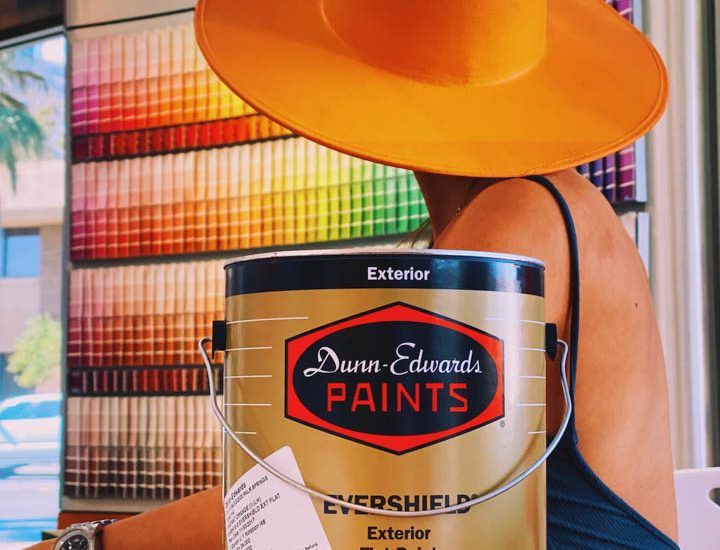
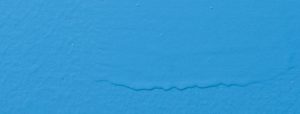 Humidity – Inside and outside! When the humidity is too high or low, pause. High humidity will cause paint to dry very slowly while low humidity will cause paint to dry to fast. It’s much easier to resolve low humidity painting issues than high humidity. In high humidity indoor and outdoor environments, blistering, cracking, and mold behind the paint is common. Painting in these conditions can also cause the paint to sag – giving it a droopy look. High humidity can also cause the same problems as illustrated above under temperature. Bottom line – Painting in high humid conditions accelerates paint deterioration.
Humidity – Inside and outside! When the humidity is too high or low, pause. High humidity will cause paint to dry very slowly while low humidity will cause paint to dry to fast. It’s much easier to resolve low humidity painting issues than high humidity. In high humidity indoor and outdoor environments, blistering, cracking, and mold behind the paint is common. Painting in these conditions can also cause the paint to sag – giving it a droopy look. High humidity can also cause the same problems as illustrated above under temperature. Bottom line – Painting in high humid conditions accelerates paint deterioration.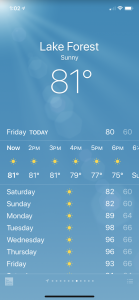

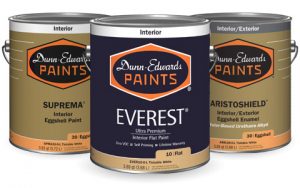 The brand matters a lot! When considering paint, it is all about performance. Performance is defined by adhesion (bonding), flexibility, color fade, and gloss loss. Inside the house, block, sag resistance, hide, scrub resistance, and washability are super important.
The brand matters a lot! When considering paint, it is all about performance. Performance is defined by adhesion (bonding), flexibility, color fade, and gloss loss. Inside the house, block, sag resistance, hide, scrub resistance, and washability are super important.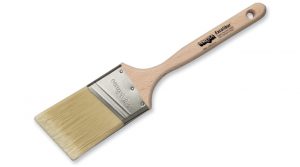 Do not let your brushes or rollers sit in the can. Never let either load up with dry paint. When it is
Do not let your brushes or rollers sit in the can. Never let either load up with dry paint. When it is  hot, always stop and rinse brushes and rollers when you notice paint drying behind the wet edge on the brush and on the sides of a roller. When you stop for lunch, always thoroughly clean all brushes, rollers, screens, and paint buckets. After lunch, start with clean tools.
hot, always stop and rinse brushes and rollers when you notice paint drying behind the wet edge on the brush and on the sides of a roller. When you stop for lunch, always thoroughly clean all brushes, rollers, screens, and paint buckets. After lunch, start with clean tools.